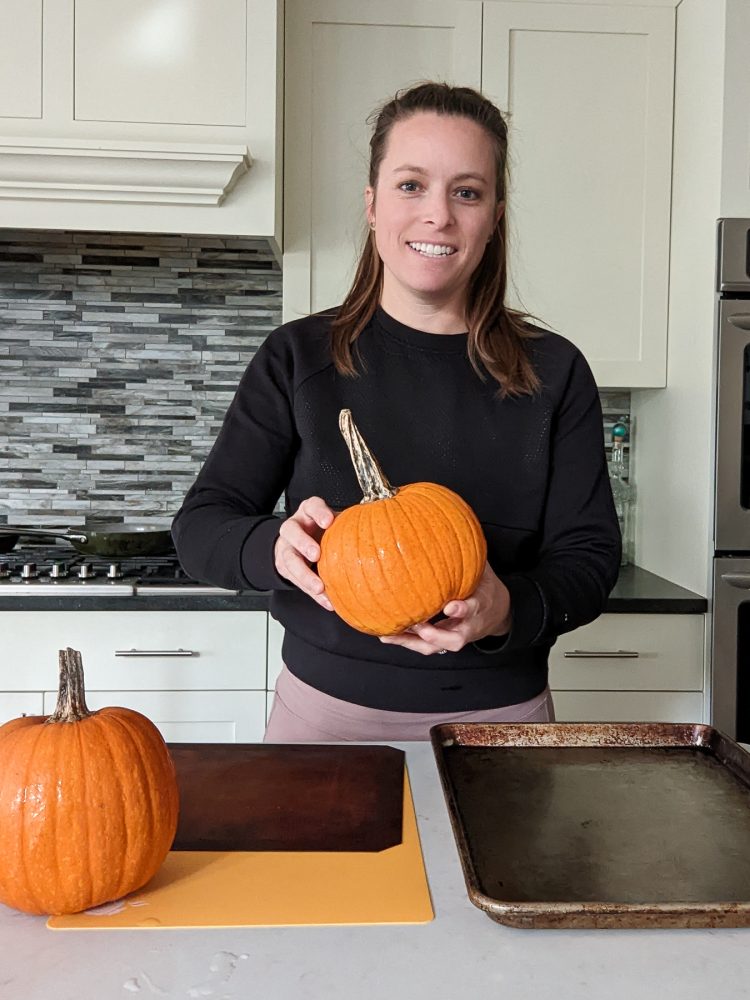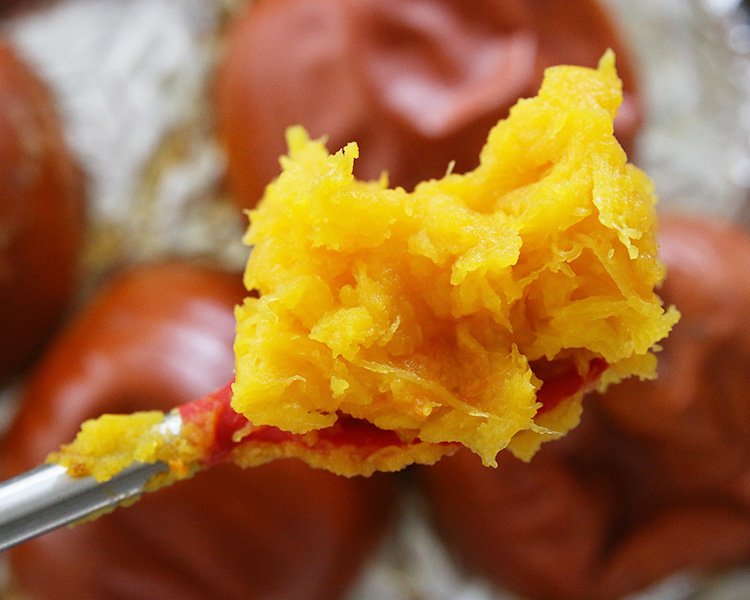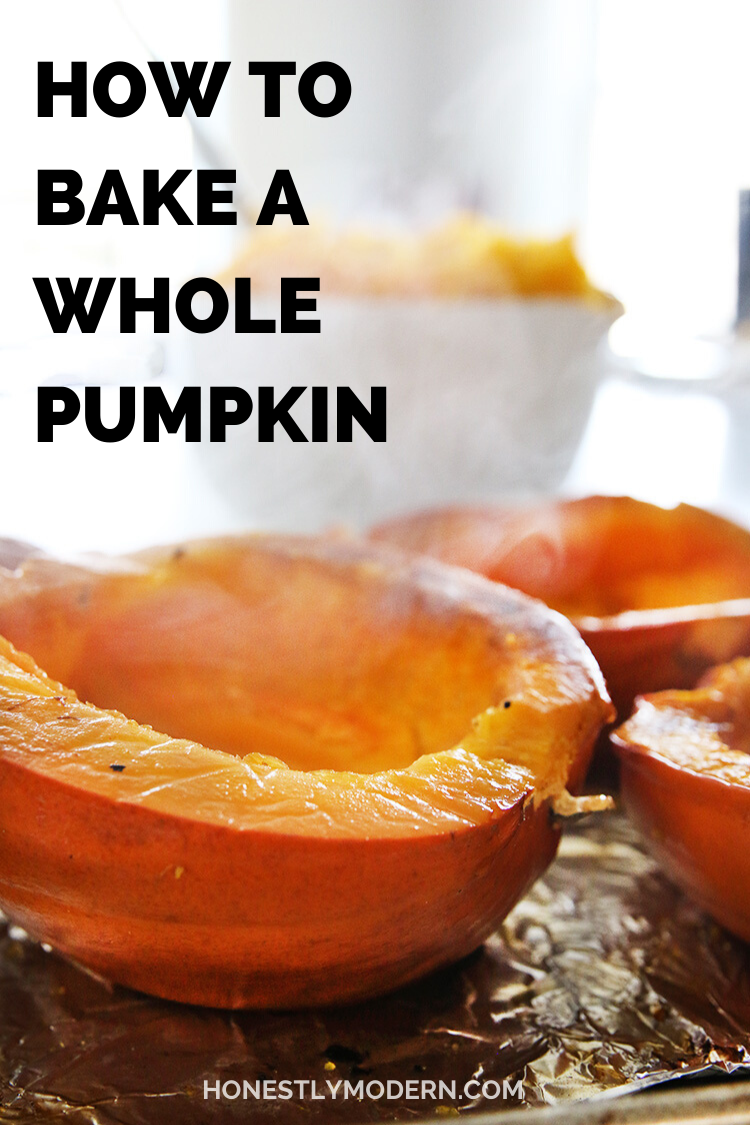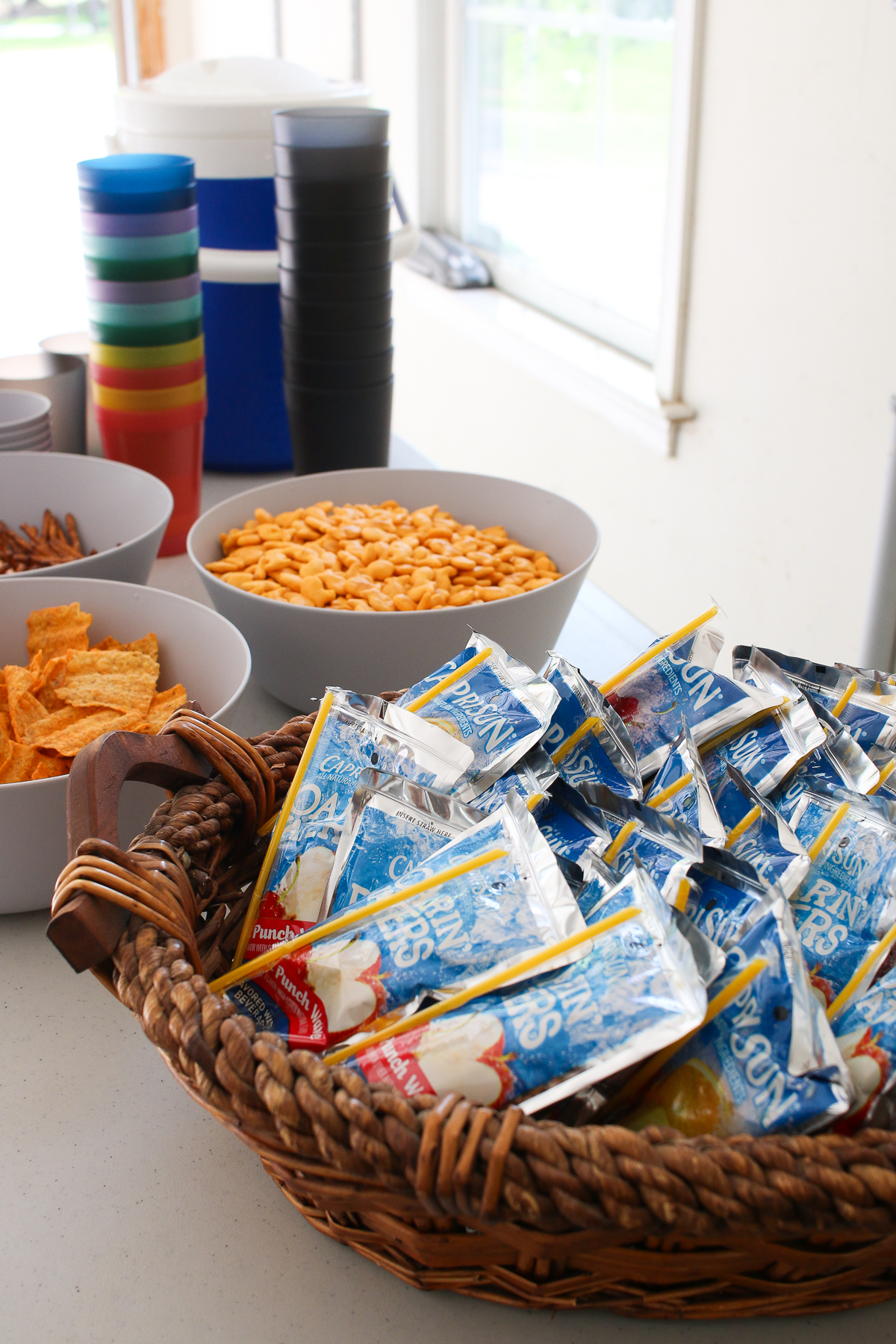Zero Waste Kitchen | How To Bake a Pumpkin for Puree
Wondering how to roast pumpkin for puree? If the idea of baking a whole pumpkin seems hard or intimidating, don’t fret. It’s actually really easy. It’s also a great way to incorporate some healthy food in a zero-waste way into our kitchens. Check out this really simple tutorial about how to roast a pumpkin for puree with zero waste no matter your level of kitchen skills!

Do you know how to bake a whole pumpkin? Up until recently, the idea sounded rather overwhelming to me. A bit of internet research enlightened me about just how easy it is. The first year I tried this, my confidence got the best of me, and I bought 14 pumpkins at one time, enamored by the prospect of zero waste pumpkin everything and the unbeatable price of $0.50 per pumpkin from a local farm.
The pumpkin puree lasted in our freezer for over a year. We recently used the last of last season’s pumpkin in a batch of these pumpkin chocolate chip cookies. While out running errands, I stopped by another local flower farm in our area that also sells sugar pumpkins and gourds in the fall.
This time, I exercised a bit of restraint and only purchased six small sugar pumpkins. Now it’s off to the kitchen to roast these sweet pumpkins for pumpkin cookies, pumpkin muffins, this pumpkin soup, and whatever other pumpkin delicacies suit our fancy.



Buy Pumpkins From Local Farms
Depending on where you live, you might be able to buy your pumpkins from a local farm stand or farmers’ market. We have a handful of farmers that sell their pumpkins on street stands or at weekend farmers’ markets.
Pumpkins are heavy and require a lot of energy for transportation relative to many other edible goods. Choosing local pumpkins not only supports your local small businesses but also reduces the carbon footprint associated with getting those pumpkins from the farm field to the kitchen counter.

Can You Make Pumpkin Puree with Any Pumpkin?
You can use any pumpkin to make pumpkin puree, but certain pumpkins are better for puree than others. Small sugar pumpkins are sweeter than large carving pumpkins. They also are less watery and stringy inside. These qualities make the sugar pumpkins better for baking and cooking.
We were lucky that our local farmer offered plenty of small sugar pumpkins for sale. They were cute and just the right size to roast for our favorite recipes. Even if you can’t find them locally, sometimes grocery stores carry sugar pumpkins for baking too.
Use Pumpkins For Decor Before Baking
Provided they aren’t cut up or carved, pumpkins last quite a while before going bad. Why not buy your pumpkins before you need them, use them as holiday decor, and then bake up them as the holidays pass? It’s a zero-waste win when we can use something as decor and food!
When I bought that lot of 14 pumpkins previously, I didn’t need that many pumpkins to decorate my house. Instead, I left them in my garage for a few weeks before I could get to cooking them. The garage allowed them to stay cool and fresh. Then one Saturday morning, I dove into the giant pile of pumpkins screaming my name and spent a few hours baking the heck out of them to store in my freezer for many months.
I washed. I cut. I baked. I rotated. And finally, I scraped ten full glass jars of pumpkin flesh out of the skins and into my hands. P.S. You better believe all those glass jars were repurposed pasta sauce jars. Repurposed glass jars are my jam (it’s kind of a requirement for being in the zero-waste club).
This week I am back at the pumpkin baking efforts. I am so pumped to have fresh pumpkin that will likely last us for several months.





How to Clean a Pumpkin for Cooking
Before cutting and cleaning out the inside of the pumpkin, give the pumpkin a quick rinse and scrub with water to get any dirt off the outside. That’s about all you need to do before cutting it in half.
As you split the pumpkin in two halves, take care with the knife. It can be a little tough to cut through the pumpkin, especially near the stalk. Sometimes I find it’s helpful to cut around most of the pumpkin and then pull it apart with my hands to break it in half near the stem.
Once split, scoop out the seeds. Don’t worry too much about any stringy flesh inside. That will cook up and be just fine once you mix it together with the rest of the flesh of the pumpkin in your pumpkin puree.

Save The Pumpkin Seeds For Eating or Planting
As you clean out the inside of the pumpkins, be sure to save the seeds. There are so many delicious recipes to roast pumpkin seeds and eat them as a snack or on a salad.
Alternatively, save the seeds (or at least some of them) and use them to plant your own little pumpkins next year! Pick one or two of the best pumpkins from the bunch and save seeds from those ones. It’s kind of like “survival of the fittest.” This method of saving seeds from the tastiest, prettiest, largest, or best performing produce in a harvest is a long-practiced tradition in agriculture.
I have never saved seeds before, so I wasn’t exactly sure how to do it for pumpkin seeds. I reached out to the farmer from whom I bought them and asked her to give me some pointers on how to save pumpkin seeds for next season. (I’ll share an update when I hear back from her).
I won’t need all the pumpkin seeds or I’ll have a yard full of pumpkins. But I’ll use a few of them. I may end up offering some of them up to others in a Buy Nothing group. I’ve also seen friends share their seeds in Little Free Seed libraries. How cool is that?

How to Prepare the Baking Sheet For Success
I’ll be honest. Roasting pumpkins gets a little messy. As the flesh of the pumpkin bakes face down on the pan, sweet pumpkin juice seeps onto the tray. I learned the hard way that a sheet of foil or parchment paper is worth the single-use waste.
While I generally prefer silicone baking mats over aluminum foil or parchment paper because they are reusable, foil or parchment paper helps protect the pan for future use. I’d much rather keep the pan and throw away a sheet or two of single-use paper or foil than have to replace the entire pan.
Compostable Parchment Paper
If you choose parchment paper, look for compostable parchment paper. Even when it’s covered in food remnants, it still will be just fine in the compost bin. If you’re composting it in a backyard bin at home (as opposed to a commercial or industrial composting facility), be sure to look for certification on the packaging that it will break down in a home compost bin.
Most likely it will compost just fine, but certification will ensure it’s been tested accordingly. You can check out more about commercial versus home composting and how to know what works in which systems in this post about a variety of everyday compostable kitchen products.
Aluminum Foil
If you opt to cover the pan in aluminum foil, just remember that soiled aluminum foil is not recyclable. Clean aluminum can be recycled over and over, which makes it a great material with respect to sustainability when it stays clean. But once it’s covered in sticky, gooey pumpkin guts (or any other food waste, for that matter), it contaminates the recycling stream and should be put in the trash instead.
On a related note, I recently was on the Greenscore podcast to talk more about sustainable baking supplies. We got into the parchment paper vs. aluminum foil vs. silicone baking mats topic. Listen to the podcast for more details on this topic, including some cool science and statistics about the comparisons from the host!

How To Compost the Pumpkin Parts You Don’t Eat or Save
Some of the pumpkin parts just aren’t that great for eating or repurposing, like the skins and stalks. Set those aside and toss them in your compost bin. Even though they’ve been cooked, your compost bin will love them.
You could chop up your pumpkin skin scraps and stalks to help them break down more quickly in the compst bin. But I don’t think that’s really necessary. I just toss the whole skin pieces and stalks in the compost bin and let the microorganisms do the hard work of decompostion.
If you’re not sure about how to start composting, we’ve got a WHOLE section on composting at home that’s growing by the week! It’s much easier than you might (especially if you hire a curbside service, use a drop-off location, or borrow a neighbor’s compost bin).

How To Store Extra Pumpkin Puree
If you don’t plan to use your fresh, roasted pumpkin all at once, save it for later. It will freeze for quite a long time. We’ve saved our pumpkin in repurposed glass jars in the freezer for over a year, and it was just as delicious out of the freezer as it was when it was fresh from the oven.
When storing the extra pumpkin puree, be sure to leave bit of extra space in the glass jar. Once popped in the freezer, the puree may expand a bit. Without extra space, it could cause the glass to break (been there, done that… not awesome). A half inch or inch of extra space at the top should do the trick. We also don’t stuff the glass jar entirely full.
Fresh pumpkin can be an awesome addition to savory recipes like pumpkin soup, pumpkin pasta, or pumpkin quesadillas as well as sweet recipes like pumpkin cake, pumpkin muffins, and pumpkin chocolate chip cookies. Be sure to check out our Beginner’s Guide to Zero Waste Baking for more tips about ingredients, tools, and more to help you master low-waste or zero-waste baking!
Roasting Pumpkins is an Easy Zero-Waste Swap
If you have never cooked fresh pumpkin, it’s really quite simple. Smaller pumpkins tend to be better for baking and cooking; they have more flavor and are less stringy gunk on the inside than larger pumpkins. The oven does most of the work for you.
Check out the recipe below and let me know if you try it. If you do, I’d especially love to hear what you made with the pumpkin. I’m always on the hunt for new recipes from things I grow in our garden!



How To Bake a Pumpkin | Zero Waste Food
Follow this recipe to roast a pumpkin while reducing food waste and living a zero waste lifestyle.
Ingredients
- 1 pumpkin
Instructions
- Preheat oven to 425°F
- Wash the pumpkin and slice it in half.
- Cover a baking sheet with compostable parchment paper or a silicone baking mat. (You can use foil as well, though it can't be recycled or composted, so it will have to go in the trash.)
- Scoop the seeds out of the pumpkin. You can set them aside to roast as a snack or save them for future use.
- Lay each half of the pumpkin on the baking sheet, skin side up. This lets the flesh of the pumpkin steam in the oven without getting dried out.
- Bake for about one hour or until the flesh of the pumpkin is soft.
- Remove from oven and allow to cool for 5-10 minutes.
- Scoop the flesh from the pumpkin and set it in a dish or jar.
- Discard the skin (you can compost it!)
- To freeze the pumpkin, if desired, place it in an airtight container after the pumpkin cools. If you're using a glass jar, be sure to leave space at the top so the glass doesn't break when the pumpkin freezes, as it will expand slightly while freezing.
Nutrition Information:
Yield: 4 Serving Size: 1Amount Per Serving: Calories: 12Total Fat: 0gSaturated Fat: 0gTrans Fat: 0gUnsaturated Fat: 0gCholesterol: 0mgSodium: 1mgCarbohydrates: 3gFiber: 1gSugar: 1gProtein: 0g

Jen Panaro
Jen Panaro, founder and editor-in-chief of Honestly Modern, is a self-proclaimed composting nerd and advocate for sustainable living for modern families. To find her latest work, subscribe to her newsletter, Stepping Stones.
In her spare time, she’s a serial library book borrower, a messy gardener, and a mom of two boys who spends a lot of time in hockey rinks and on baseball fields.
You can find more of her work at Raising Global Kidizens, an online space to help parents and caregivers raise the next generation of responsible global citizens.







